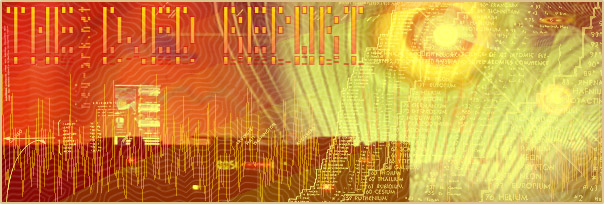 |
|
neurogenesis
we live in a world of networks... in fact any complex system in nature can be modeled as a network, where vertices are the elements of the system and edges represent the interactions between them... coupled biological and chemical systems, neural networks, social interacting species, computer networks, or the internet are only a few such examples we introduce the concept of efficiency of a network as a measure of how efficiently it exchanges information... by using this simple measure, small-world networks are seen as systems that are both globally and locally efficient... this gives a clear physical meaning to the concept of "small world," and also a precise quantitative analysis of both weighted and unweighted networks... we study neural networks and man-made communication and transportation systems and we show that the underlying general principle of their construction is in fact a small-world principle of high efficiency scale-free networks tend to contain centrally located and interconnected high degree "hubs", which dramatically influences the way a network operates... for example, random node failures have very little effect on a scale-free network's connectivity or effectiveness, however deliberate attacks on such a network's hubs can dismantle a network with alarming ease... thus, the realization that certain networks are scale-free is important to security.... these networks also exhibit the small world phenomenon, in which two average nodes are separated by a very small number of connections - also, scale-free networks generally have high clustering coefficients a multitude of real-world networks have been shown to be scale-free, including:
a persistent theme among people writing about the social aspects of weblogging is to note (and usually lament) the rise of an A-list, a small set of webloggers who account for a majority of the traffic in the weblog world... this complaint follows a common pattern we've seen with MUDs, BBSes, and online communities like Echo and the WELL... a new social system starts, and seems delightfully free of the elitism and cliquishness of the existing systems... then, as the new system grows, problems of scale set in... not everyone can participate in every conversation... not everyone gets to be heard... some core group seems more connected than the rest of us, while individuals abuse open protocols and so on prior to recent theoretical work on social networks, the usual explanations invoked individual behaviors: some members of the community had sold out, the spirit of the early days was being diluted by the newcomers, et cetera... we now know that these explanations are wrong, or at least beside the point - what matters is this: diversity plus freedom of choice creates inequality, and the greater the diversity, the more extreme the inequality.. in systems where many people are free to choose between many options, a small subset of the whole will get a disproportionate amount of traffic (or attention, or income), even if no members of the system actively work towards such an outcome... this has nothing to do with moral weakness, selling out, or any other psychological explanation - the very act of choosing, spread widely enough and freely enough, creates a power law distribution small world networks may be operative in adult brain neurogenesis... adult neurogenesis has been observed in mammalian brain including human but a question remains: how do new neurons become functional in the adult brain? it is proposed that the random addition of only a few new neurons functions as a maintenance system for the brain's "small-world" networks... randomly added to an orderly network, new links enhance signal propagation speed and synchronizability... newly generated neurons are ideally suited to become such links: they are immature, form more new connections compared to mature ones, and their number but not their precise location may be maintained by continuous proliferation and dying off... similarly, it is envisaged that the treatment of brain pathologies by cell transplantation would also create new random links in small-world networks and that even a small number of successfully incorporated new neurons may be functionally important the djed report - continued the djed report neu ark net / ark lite / ios |